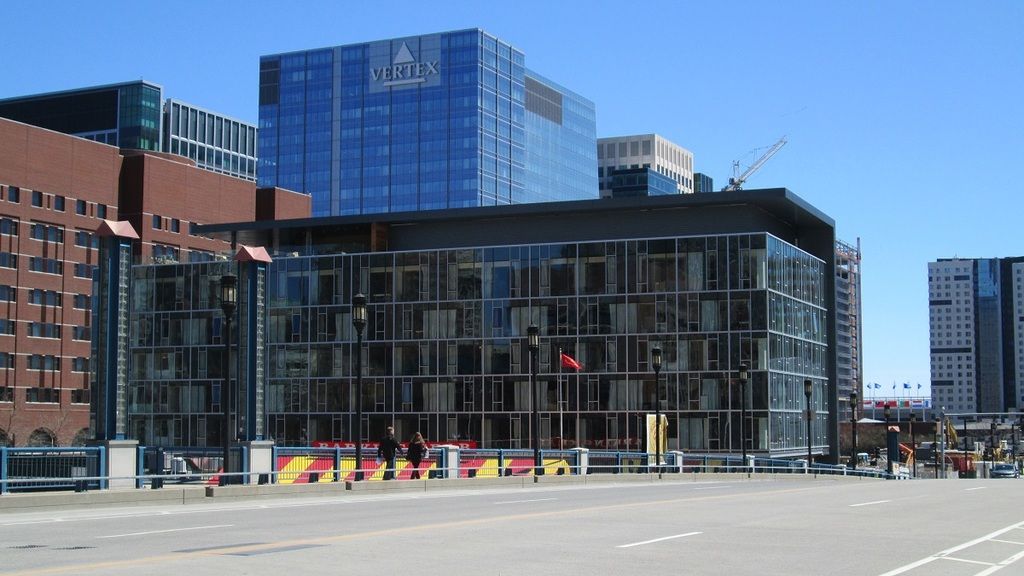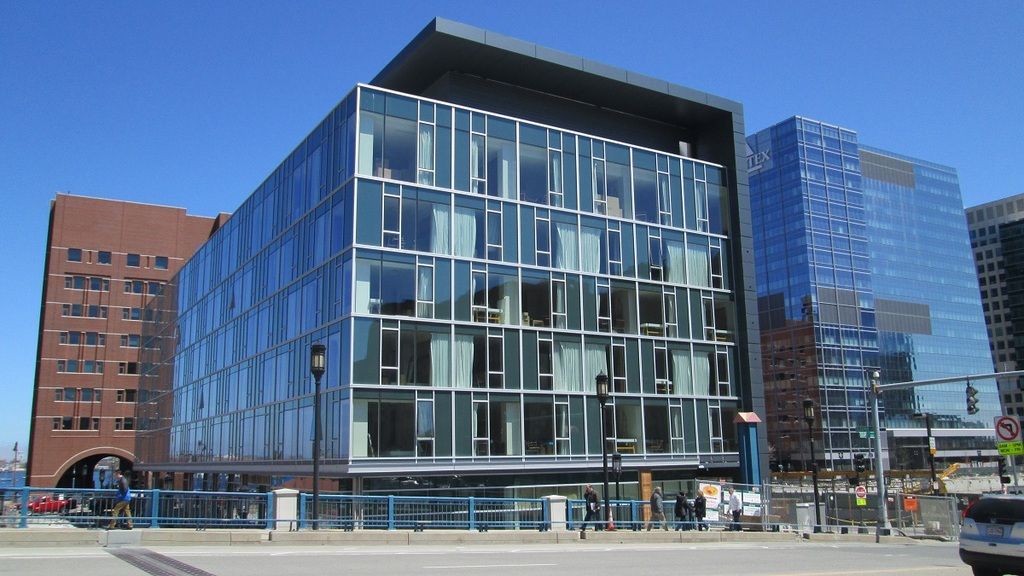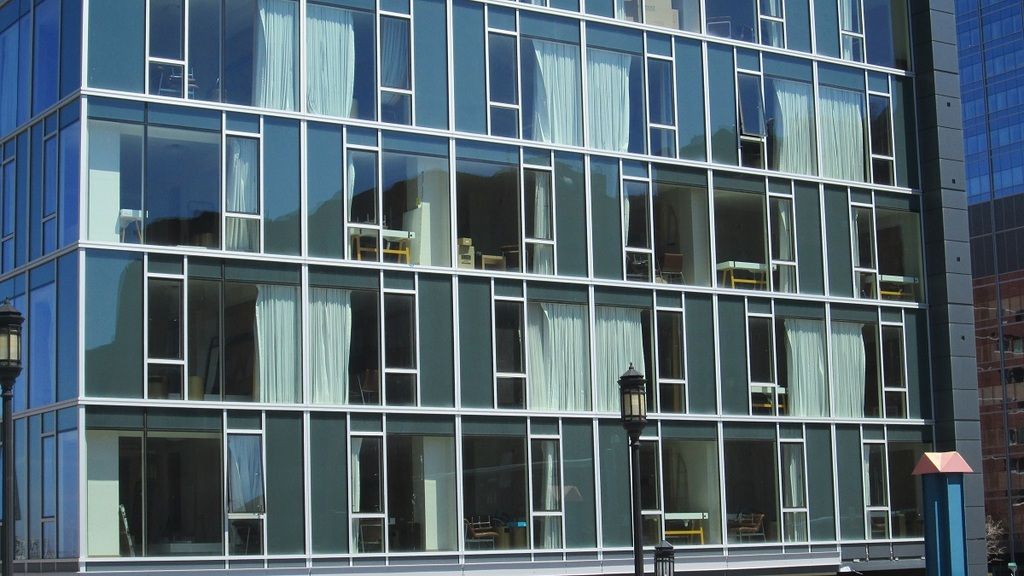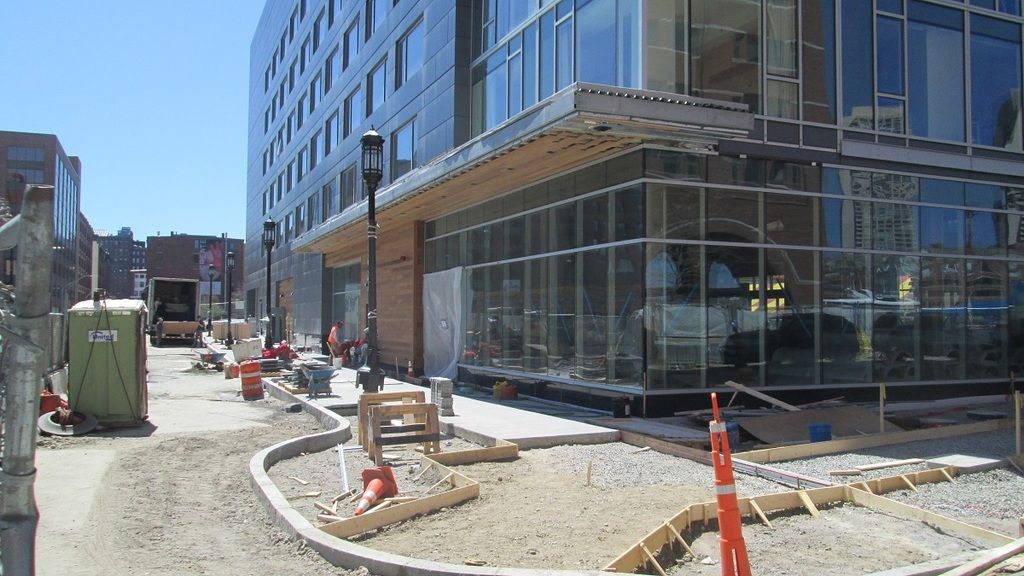What does it take to turn an area into a neighborhood? A unified position on parking-space savers? A schmoozer everyone calls “the mayor?” Agreement on facial hair? A signature dish or architectural style? A Ben Affleck movie?
The question is gaining urgency as the Seaport District rises, and Bostonians wonder whether the collection of pricey water views and highway-wide streets will ever join the ranks of our town’s famed neighborhoods — or instead remain remote, a destination for fancy outsiders as they come and go via ride-hailing app. Call it Uberstan.
Can a place with an East Service Road running through it ever have a soul?
People who study neighborhoods for a living — urban planners, sociologists, and, of course, location-analytics firms hired by the likes of Starbucks — know that it takes a village to make a great neighborhood.
But a comedian — Steve Sweeney , a son of Charlestown — may have summed it up best: “Life is about a lot of little relationships,” he said. “I got a guy who does my laundry because I’m a lazy [slob]. I say, ‘Can I have it tomorrow?’ and he says, ‘Why not?’ He always says the same thing — ‘Why not?’ It kind of picks up my day.”
Even now, after all this time, any discussion of the Seaport District, and its shot at joining the ranks of Southie, JP, Charlestown, Allston, Back Bay, Mattapan, and the rest, needs to start with the most basic question of all: Where, exactly, is it?
The Seaport District exists in two worlds. On Earth, it’s about 1,000 acres on the South Boston Waterfront, stretching from the harbor to Fort Point Channel and as far into South Boston as East and West First streets.
In its other life — in the sleek websites created by developers — the Seaport District lives in a generic, LEED-certified universe of glossy waterfront balconies, stylish indoor-outdoor furniture, and slender people with good hair enjoying the company of other slender people with good hair.
The vibe is LA-meets-South-Beach-meets-do-you-have-enough-Twitter-followers-to-live-here?
According to the South Boston Waterfront Sustainable Transportation Plan about 10,900 residents lived in the Seaport District in 2013 — compared with the approximately 10,130 who call the North End home (2010 US Census).
The city expects the Seaport’s population to top 20,000 in 2035 and reach 26,740 when the whole area is built out, at some unspecified point in the future. That would make it more populous than the Back Bay (18,088, according to the 2010 Census), Charlestown (16,439), and Mattapan (22,600), but smaller than Roxbury (48,454) and Southie (33,311).
But with condos selling for as much as $7 million, the gripe against the Seaport District is this: Except in the Fort Point Channel section, where the buildings — and the people — are on a human scale, and in a few clusters closer to the harbor side, there’s too much space between the buildings, everything is shiny, and how can you have a neighborhood with no old-timers?
As Boston University anthropologist Merry White pointed out, “You need people living there over generations to make a place that has meaning.”
The professor teaches a class about Boston neighborhoods, and last fall led her class on a tour to make her lessons concrete.
“You need flavor — literally,” she said. “A neighborhood is a place in which people live, eat, and find themselves a community. It’s also, importantly, where people are visible on the streets. Part of that identity, that visibility, is in the food itself.
“In Dorchester you have banh mi sandwiches. In East Boston, you have many different kinds of Central and South American foods, from El Salvador to Peru.”
She paused to consider the flavor of the Seaport. “The flavor of money,” she said.
Then there’s the sound of a place. Regional accents aren’t as prevalent as they once were — a person’s area code is the new hometown indicator — but still, Bostonians are known for the way the natives talk.
The list of good actors mocked for botching Boston accents is long — Tom Hanks in “Captain Phillips,” Julianne Moore in “30 Rock,” Martin Sheen in “The Departed,” Kevin Costner in “Thirteen Days,” and it goes on — but that might not be a problem for movies set in the Seaport District.
Marjorie Feinstein-Whittaker teaches accent-modification classes in Boston, and says the Seaport has no discernible accent.
“It doesn’t have a history or a homogeneous group of people that have lived their for generations,” she said. “You fly in, fly out, buy a property, and hope the investment pays off.”
She contrasted that with the well-recognized Beacon Hill and Southie accents. “When I think of a Brahmin accent, it almost sounds British,” she said. “ ‘My ahnt cahn’t come.’ In Southie, it’s usually faster and less precise. ‘Talkin’ to your neighba.’ ‘Walkin’ the dog.’ ”
A strong neighborhood has a smell, a sound, and, said Vivien Li, president of The Boston Harbor Association , a place to gather.
“In Back Bay and Beacon Hill, you have Boston Common and the Public Garden,” she said. “In Dorchester, you have Franklin Park. In traditional South Boston, you have Carson Beach. We need some place similar in the Seaport/Innovation District.”
The good news is that more condos and apartments and stores and offices are being built or are planned, and additional streets, too, and green spaces, a movie theater, a bowling alley, a high-end gym, and — within only five years! — a big grocery store.
At the same time, some observers, including the Boston Redevelopment Authority’s director of planning, Kairos Shen, worry that high land prices and a dearth of three-bedroom apartments will keep out the very people needed to transform individual condos and apartments into a neighborhood: families.
The Seaport doesn’t have its own school. Shen said an undisclosed developer is looking at building a charter school, but no formal plans have been submitted. As for a traditional public school, that’s a maybe.
A spokesperson for Mayor Martin J. Walsh said the needs of many neighborhoods, the Seaport included, will be reviewed as part of his 10-year education and facilities master plan.
For now, the idea of what constitutes a neighborhood kid was summed up by Jimmy Tingle , another local comedian/urban planner. “At a million dollars an apartment,” he said, “if you want to see kids in the Seaport District, go to the Children’s Museum.”
Getting people to move to the area is only the first part of the challenge, said urban studies theorist Richard Florida. The second involves getting them to like it.
With economic and lifestyle factors favoring two groups — the young and childless, and older empty-nesters — conflict can arise, said Florida, director of the University of Toronto’s Martin Prosperity Institute, an urbanism-focused think tank.
“The rubber meets the road at 1 a.m., when the people who used to live in the suburbs, and are used to going to bed earlier, want it quiet, and the younger people make a lot of noise.”
Perhaps the best hope for turning Uberstan into a neighborhood lies not with the people, but the pets.
“I cannot tell you how many people have said to me, ‘I lived in Charlestown for X number of years and didn’t have friends here until I got a dog and went to the dog park,” said Michelle Fournier, the founder of Slobbr, a dog-lifestyle app debuting this spring and an owner of Durty Harry’s dog boutiques. “It’s about repetition and intimacy. You see these people at 6 a.m. and you look like crap.”
In other words, welcome to the neighborhood.







